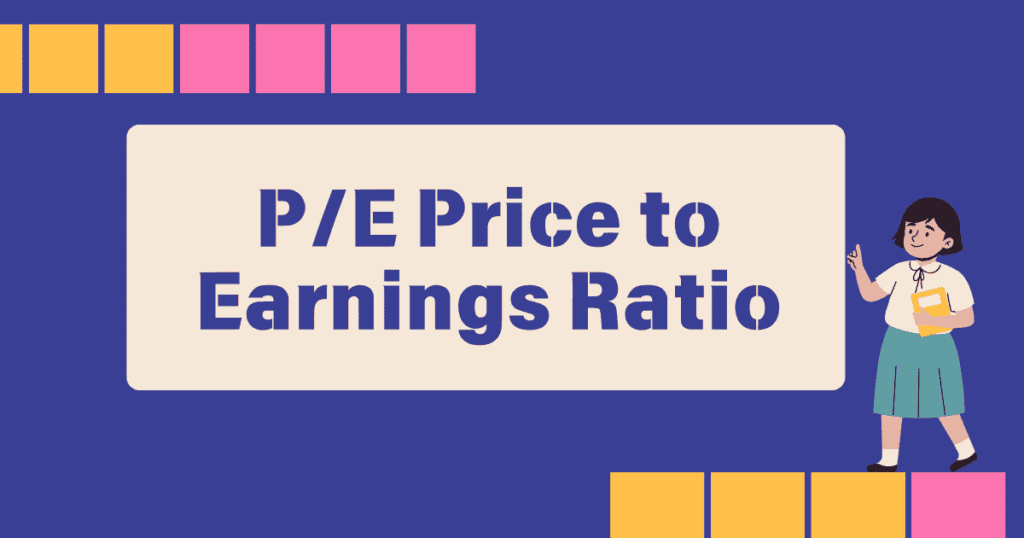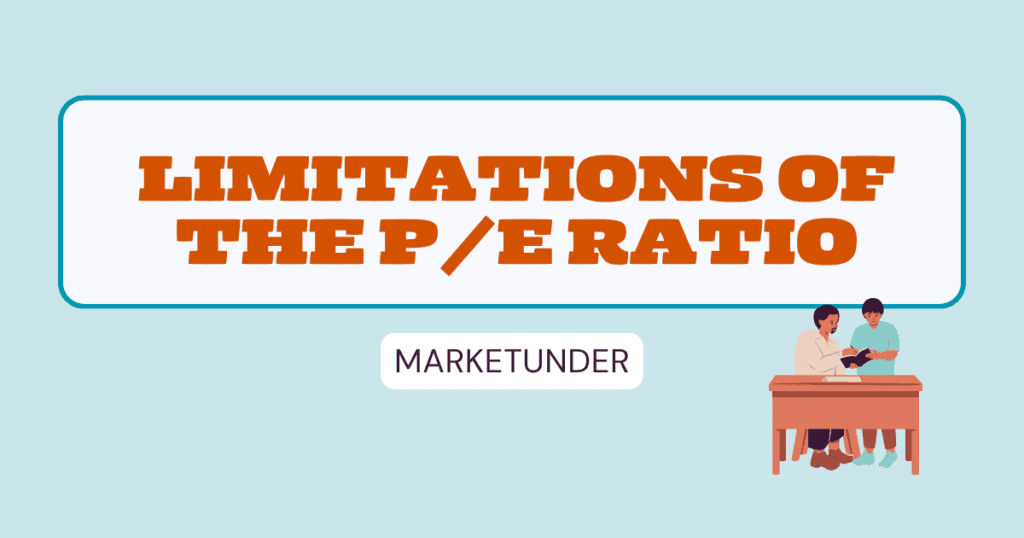P/E-Price to Earnings Ratio
What is the P/E-Price to Earnings Ratio?

P/E Ratio–Price to Earnings Ratio is one of the most popular tools used by investors to gauge whether a stock is overpriced, underpriced, or fairly valued. In simple terms, it tells you how much investors are willing to pay for every rupee (or dollar) a company earns. A high P/E-Price to Earnings per share ratio may suggest high growth expectations, while a low one may indicate an undervalued stock—or potential risks.
How Do You Calculate the P/E-Price to Earnings Ratio?
The formula for the P/E Ratio–Price to Earnings Ratio is:
P/E Ratio = Market Price Per Share
——-—————————————
Earnings Per Share (EPS)
Where:
- Market Price per Share is the stock’s current trading price.
- Earnings per Share (EPS) is the company’s net profit divided by the number of outstanding shares.
For example, if a stock is trading at INR 200 and its EPS is INR 20, the P/E ratio is:
This means investors are paying INR 10 for every INR 1 the company earns.
Different Types of P/E-Price to Earnings Ratios
Understanding the different types of P/E-Price to Earnings ratios helps investors get a clearer picture of a stock’s valuation.
Forward P/E-Price to Earnings Ratio
P/E-Price to Earnings ratios is calculated using estimated future earnings. Since it’s based on projections, it helps investors understand how a company might perform in the coming years. However, since forecasts aren’t always accurate, it’s best used with caution.
Trailing P/E-Price to Earnings Ratio
The Trailing P/E-Price to Earnings Ratio is based on the company’s earnings from the past 12 months. Since it’s calculated using actual financial data, it provides a more reliable snapshot of valuation. However, past performance may not always predict future success.
Why Does the P/E-Price to Earnings Ratio Matter in Value Investing?

For value investors, the P/E-Price to Earnings ratio is a go-to metric to find undervalued stocks. If a stock’s P/E-Price to Earnings ratios is lower than its industry average, it may be a hidden gem. However, a low P/E-Price to Earnings ratios isn’t always a sign of a great buy—it could also mean that investors have concerns about the company’s growth or stability.
On the flip side, a high P/E ratio might suggest strong future growth, but it can also indicate an overpriced stock. That’s why it’s essential to use other metrics alongside the P/E ratio when making investment decisions.
Absolute vs. Relative P/E Ratio
Absolute P/E Ratio
This method compares a stock’s current P/E ratio to its own historical P/E values. If the ratio is significantly lower than usual, it could signal a buying opportunity—provided there’s no negative news impacting the company.
Relative P/E Ratio
This compares a company’s P/E ratio to similar companies, industry averages, or broader market indices. A higher-than-average P/E ratio might indicate that the stock is overvalued, while a lower one could suggest undervaluation.
What is a Good P/E Ratio?
There’s no universal answer to what makes a “good” P/E ratio—it depends on the industry, market conditions, and a company’s growth potential. Generally:
- Growth stocks (like tech companies) often have high P/E ratios, sometimes above 30, reflecting their strong earnings potential.
- Value stocks (such as those in traditional industries) usually have lower P/E ratios, often below 15.
- Industry averages provide a helpful benchmark. Comparing a company’s P/E ratio to its sector’s average gives investors more context.
Investors should also consider their own risk tolerance and investment strategy. A long-term investor might accept higher P/E ratios for growth stocks, while a conservative investor may prefer lower ratios for stability.
Limitations of the P/E Ratio

While the PE Ratio – Price to Earnings Ratio is a useful tool, it’s not perfect. Here are some key limitations:
- Earnings Manipulation: Companies can use accounting tricks to inflate earnings, making the P/E ratio misleading.
- Doesn’t Account for Debt: Two companies with the same P/E ratio may have vastly different financial health if one has high debt and the other is debt-free.
- Industry Differences: Comparing the P/E ratio of a tech company to a utility company doesn’t make sense since their business models and growth expectations are entirely different.
- Ignores Growth Rate: A low P/E ratio doesn’t always mean a stock is a great buy—it could simply be a slow-growing company.
- Market Speculation: Sometimes, hype and speculation can drive stock prices up, inflating the P/E ratio beyond reasonable levels.
Final Thoughts
The PE Ratio – Price to Earnings Ratio is a handy tool for investors looking to evaluate stocks. However, it’s best used alongside other financial metrics like the PEG ratio (Price/Earnings to Growth), Debt-to-Equity ratio, and Return on Equity (ROE) to get a complete picture.
Whether you’re a value investor looking for hidden gems or a growth investor chasing high returns, understanding the P/E ratio can help you make smarter stock choices. Just remember—it’s not a magic number! Always consider the bigger picture before making investment decisions.
Frequently Asked Questions (FAQ)
1. What is considered a high P/E ratio?
A high P/E ratio generally means that investors expect strong future earnings growth. However, if it’s significantly above the industry average, it might indicate an overvalued stock.
2. Is a low P/E ratio always better?
Not necessarily. A low P/E ratio could mean the stock is undervalued, but it could also signal slow growth or financial instability.
3. Can the P/E ratio be negative?
Yes, if a company has negative earnings (i.e., a net loss), its P/E ratio will be negative, which usually indicates financial trouble.
4. How often should I check a stock’s P/E ratio?
It’s good to check periodically, especially when evaluating a stock for purchase or during earnings announcements when financials get updated.
5. Does the P/E ratio apply to all industries?
Not exactly. Some industries, like tech, tend to have high P/E ratios, while others, like utilities, have lower ones due to different growth expectations.
6. How does the P/E ratio compare to the P/B ratio?
While the P/E ratio focuses on (Price-to-Earnings) assesses profitability. P/B ratio asset valuation, Both should be used together for comprehensive stock analysis.
Disclaimer: The information provided in this article is for informational and educational purposes only and should not be considered financial, investment, or professional advice. While we strive for accuracy, we do not guarantee the completeness or reliability of the content. Always conduct your own research or consult a qualified financial advisor before making any investment decisions. MarketUnder.com and its authors are not responsible for any financial losses or decisions made based on this information.
4 thoughts on “P/E-Price to Earnings Ratio Explained-2025”